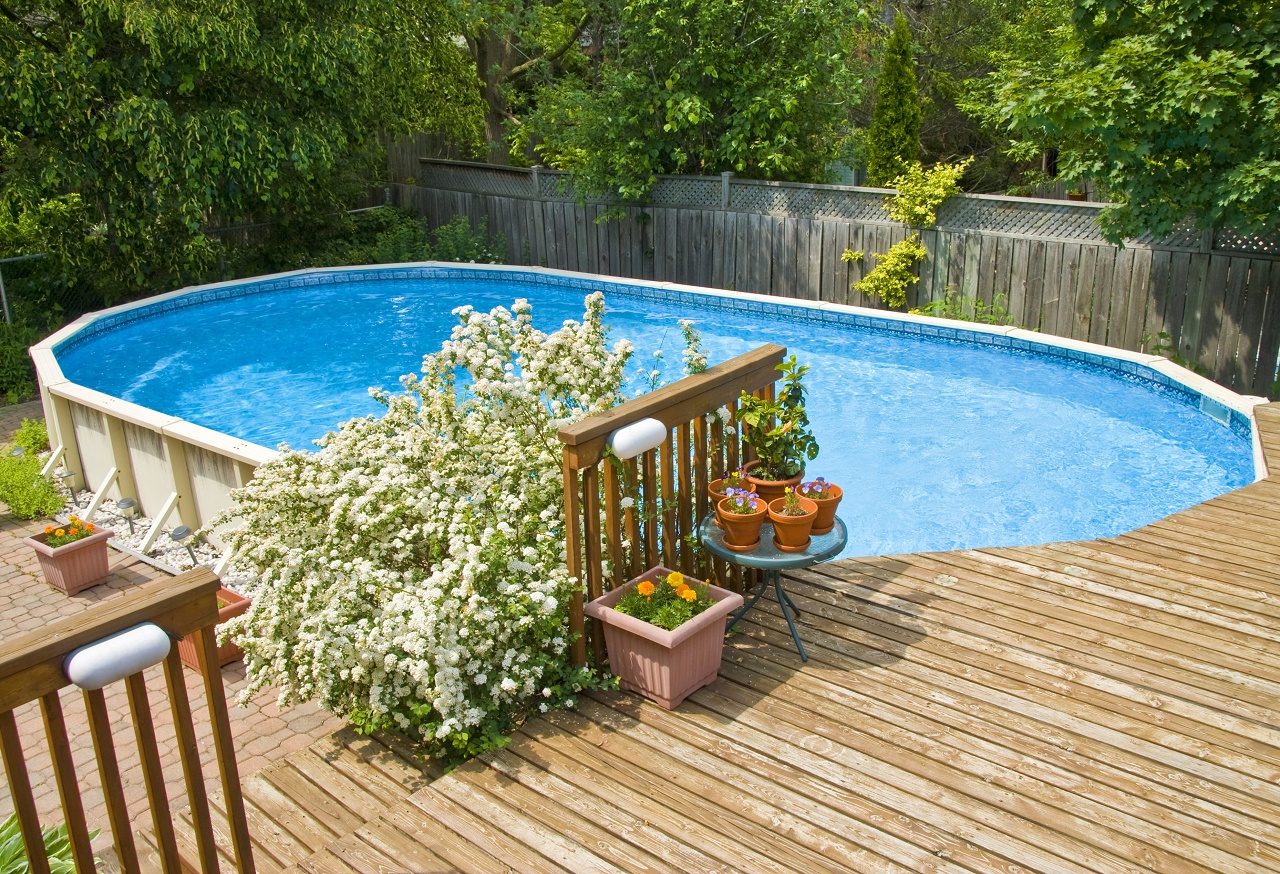If you have an above-ground swimming pool at home, you shouldn’t need to drain it on a regular basis. Indeed, draining the pool over water is usually inadvisable. This can lead to the pool liner drying out and cracking when it’s exposed to the elements.
That said, there are a handful of situations when you may need to drain all the water.
I. When Is it Necessary to Drain Your Above-Ground Pool?
- Refreshing the pool water for the new swimming season: If you use a swimming pool cover, you shouldn’t need to worry about replacing the pool water. The right cover will stop dirt and debris from contaminating the water in the first place
- Replacing the swimming pool liner: If your pool liner develops a leak or tear, you’ll have no alternative to draining the pool
- To remove the pool or to replace it: Whether you’re looking to relocate your pool or to invest in a new one, this will mean you need to drain the existing above-ground pool first
- If pool chemistry is out of balance: Some conditions like chlorine lock cannot be solved by adding pool chemicals. Indeed, the more pool shock you introduce, the worse the situation becomes. If pool pH levels are unbalanced, or you use too much pool stabilizer, the chlorine in your pool becomes ineffective. The only cure is to drain the over-treated water and start again from scratch
II. How Long Does it Take to Drain Above-Ground Pools?
The length of time for draining hinges on the size of your above-ground pool.
Expect draining to take anywhere from an hour through to 5 or 6 hours.
III. Preparing to Drain a Swimming Pool
As long as you are confident the pool chemicals in your water won’t damage any plants and trees, you could release the pool water into your yard.
If you intend to make use of storm drains or gutters, though, you should establish whether they can cope with large volumes of water. You should also check any local regulations to make sure you won’t be contravening them.
Next, you’ll need to think about how you’ll drain your pool water.
IV. Choosing the Best Method for Draining Your Swimming Pool
Of all the available options for draining swimming pools, only two make sense with above-ground pools:
- Draining your pool with a garden house
- Draining your pool with a submersible pump
Draining your pool with a garden house
The cheapest approach to draining your pool is to use a regular garden hose. As you might expect, this also happens to be the slowest method.
A hose won’t be capable of draining every drop from your pool either, so you’ll need to deal with the last few inches of water manually.
Draining your pool with a submersible pump
Since submersible pumps will move water much quicker than a standard garden hose, you’ll get the job done in a fraction the time if you invest in one of these for the job of draining your pool water.
V. Draining The Water from Your Pool
If you’ve decided to pack some patience and drain your pool using a garden hose, here’s what you need to do:
- Hook up one end of the garden hose to your faucet
- Pop the other end of the hose in your above-ground pool
- Turn on the water. It should flow into the pool, and you should also remove all air from the pipe
- Take the end of the hose off the faucet then lower it immediately to the ground
- As the water flow reverses, your pool water will start draining
If you’re planning to use a pool pump, you should refer to the instruction manual. All you’ll need to do is follow the steps outlined for your specific model and you’re good to go.
You could save money on electricity by starting the job with a garden hose and then switching to a pump to drain those last few inches. The choice is yours.
VI. Removing the Surplus Water
If you are addressing a pool chemical imbalance, you won’t necessarily need to drain all the water in the pool. Getting rid of the vast bulk should solve your problem.
When you need to move your pool or remove it, though, you’ll need to ensure it’s totally empty. Even if you started the job of draining the pool with a hose, you can switch to a submersible pool pump to drain it completely.
The only other option at your disposal is to manually scoop the water out, something which is pretty tedious and time-consuming.
VII. Finish by Drying Out The Swimming Pool
This final step of draining a pool only applies if you need to store your pool or if you need to replace the pool liner.
In either of these situations, it’s vital to dry the pool completely. Fail to do this and you might find algae and bacteria making their home in your pool. This is not only potentially harmful to your health, but you’ll end up with more work to do when you need to put the problem right.
One option is to simply leave your pool outside to air dry naturally. Wait until it’s dry to the touch.
Alternatively, use a wet/dry vacuum to get the job done quicker.
Avoid leaving the pool out to dry in extreme weather conditions to prevent any damage.
Conclusion
We hope you’ve found today’s guide to how to drain an above-ground pool has fully addressed your concerns.
Whether you choose to use a garden hose or a submersible pump for the job, a few hours is all you need to ditch your pool water.
Be sure to bookmark Wild River Country before you go, and pop back soon for all your pool-related needs.
